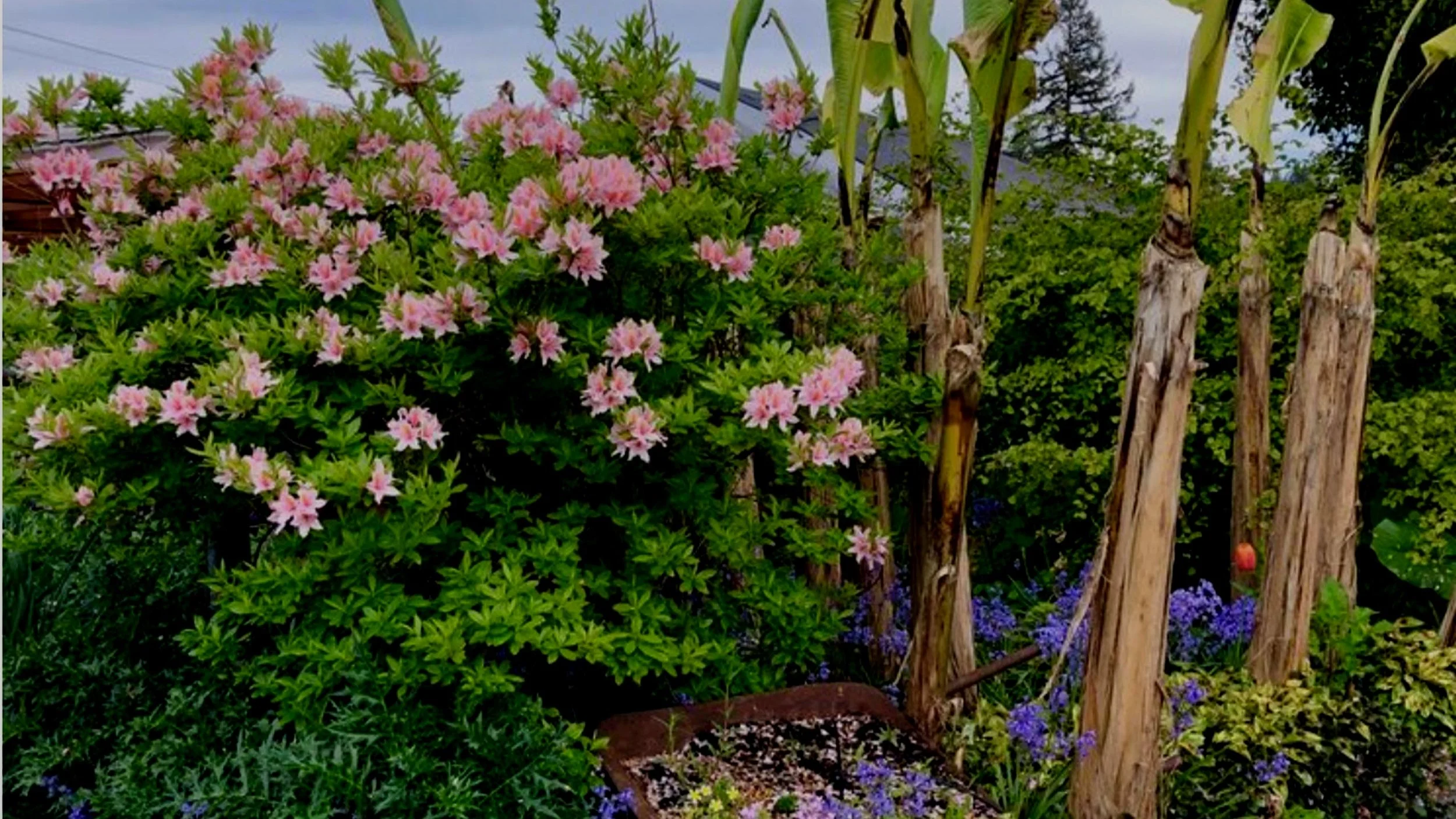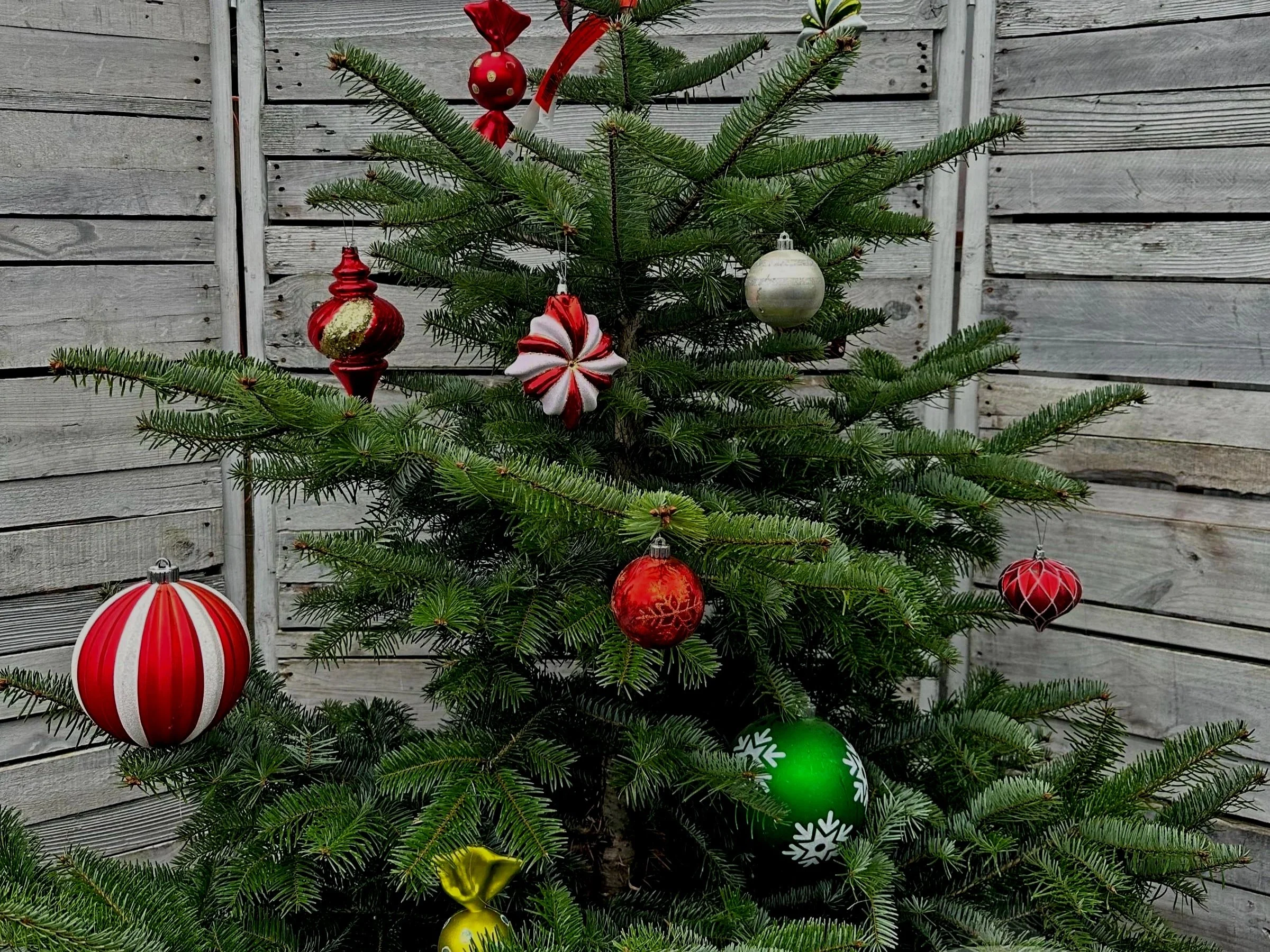Most of the time when gardeners talk about azaleas (which botanically speaking are actually rhododendrons) we think of evergreen foliage. But there is a whole other exciting group of azaleas, that while they lose their leaves in winter, have incredible hot yellow, orange, salmon, or red flowers in spring and great fall foliage color in the autumn. Many of them have strong fragrance as well and also happily grow in full sun in our northwest climate. Growing 5 to 6 feet tall, they are best planted toward the back of the bed where the bright floral displays will show up above the lower plants in front. They are relatively carefree with occasional pruning required to shape and thin their growth.
Very few deciduous shrubs can equal deciduous azaleas for showiness and color range, not to mention fragrance. Yet, not many people utilize them in their yards. Coming in a one to five gallon sized pot in garden centers, these wonderful shrubs don’t have a whole lot of magnetism, except for their fabulous blooms of course. They can look leggy and misshapen when they are young and their blooms can be sparse, but give them a chance to get established in your garden and you will wonder why you didn’t plant some years ago.
When I purchased my house and the garden center way back in 1989, there were some of these azaleas planted next to our driveway. At the time I wasn’t familiar with them and since it was late August, they weren’t really much to look at. But in the fall, they turned a vibrant bronzy-red color and the following spring they burst into bloom with the most sweetly scented fragrance of any plant I have ever known.
That particular variety in my yard (it is still there by the way) is one known as ‘Irene Koster’, which boasts pale yellow/blushed pink flowers that are highly fragrant. While ‘Irene’ is soft and pleasing, as I mentioned above, many deciduous azaleas are brassy with hot yellows, oranges, corals and reds - these flavors are not for the faint of heart. They will warm up your garden in no time flat and because they bloom before their leaves emerge, the entire bush will be enveloped in color from head to toe.
Here is a sampling of some of the more common varieties that you should be able to find at most garden centers…
‘Arneson Gem’: This variety displays red buds opening to striking yellow-orange fragrant flowers. There are several colors in the ‘Arneson’ series and they all tend to be a bit more compact than others, growing in the 3 to 4 foot range, and they also show good mildew resistance. You can’t lose with any of the variations.
'Mandarin Lights’: Flowers are ruffled bright mandarin/orange with a light fragrance.
‘Lilac Lights’: This variety is blanketed in stunning clusters of lilac-purple trumpet-shaped flowers with fuchsia spots at the ends of the branches.
‘Golden Lights’: This selection provides a massive display of brilliant, golden yellow single blooms.
‘Electric Lights Red’: This newest introduction in the ‘Lights’ series is absolutely covered in true fire engine-red flowers that have that unmistakable azalea fragrance.
The above four selections are from the ‘Northern Lights’ series and were bred for added hardiness and overall durability. Since hardiness is not an issue for us “Pacific Northwesterners”, we have more selections to choose from and the below varieties perform very well for us in our maritime climate while showing a nice compact growth habit, topping out at 4 feet tall and as wide.
‘Gibraltar’: This beauty has clusters of large, deep coppery-orange flowers. The petals are fringed and wonderfully fragrant.
‘Klondyke’: An extremely hardy selection that provides a massive display of vibrant, golden yellow, single blooms with lush, bronze-tinged green foliage.
‘Fragrant Star’: Named for its extremely aromatic, large, five-petaled, snowy white flowers that top the blue-green foliage.
All of these azaleas will appreciate a little Rhododendron food in the spring and a light dressing of mulch. Supplemental water in the heat of the summer is a nice thing to do as well, not essential but you will get better bud set if you apply some summer water.
Now is the time to buy these plants when they are in full bloom and you can check out their true flower colors, instead of trying to rely on a picture tag that might be faded. Just remember that despite the fact that they may look homely in a nursery pot, they will develop into one of your favorite shrubs in a few short years. Stay safe and keep on gardening!



